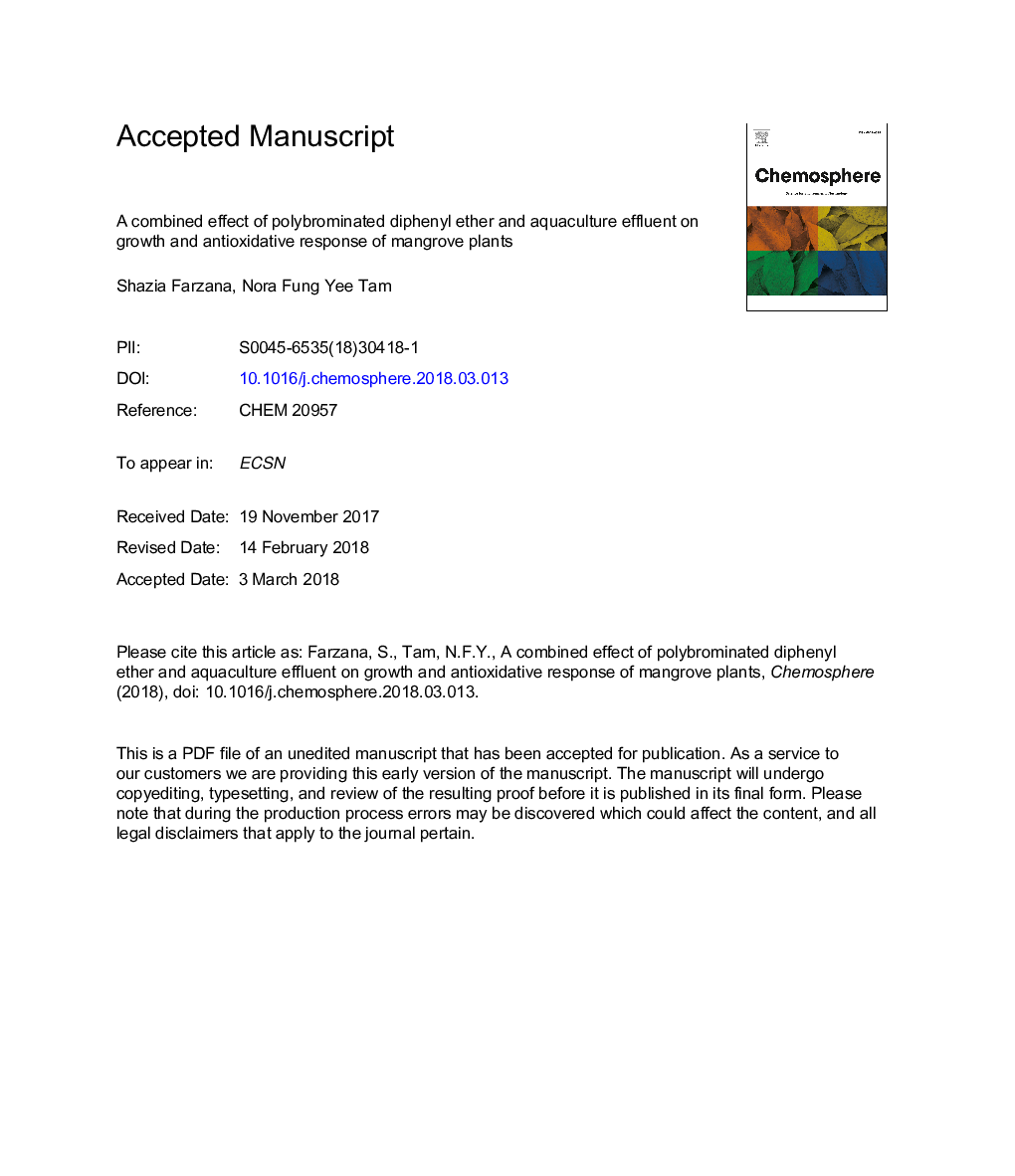| کد مقاله | کد نشریه | سال انتشار | مقاله انگلیسی | نسخه تمام متن |
|---|---|---|---|---|
| 8851519 | 1618770 | 2018 | 31 صفحه PDF | دانلود رایگان |
عنوان انگلیسی مقاله ISI
A combined effect of polybrominated diphenyl ether and aquaculture effluent on growth and antioxidative response of mangrove plants
ترجمه فارسی عنوان
اثر ترکیبی دیفنیل اتر پلیبرومندی و خروجی آکواریوم بر رشد و پاسخ آنتی اکسیدانی گیاهان مانگرو
دانلود مقاله + سفارش ترجمه
دانلود مقاله ISI انگلیسی
رایگان برای ایرانیان
کلمات کلیدی
موضوعات مرتبط
علوم زیستی و بیوفناوری
علوم محیط زیست
شیمی زیست محیطی
چکیده انگلیسی
Mangrove wetland receives nutrient-rich aquaculture effluent (AE) from nearby farming activities and polybrominated diphenyl ethers (PBDEs) from the production and usage of flame retardants. The effects of BDE-209 (the most common PBDE congener), AE and their combination on two true mangrove species, namely Kandelia obovata and Avicennia marina, were compared in a 6-month microcosm study. Results showed that K. obovata was more sensitive to these contaminants than A. marina, as reflected by its enhanced production of leaf superoxide (O2ââ) by BDE-209 and root malondialdehyde (MDA) by the combined BDE-209 and AE treatment. The hormesis model showed that the combined effects of BDE-209 and AE on the production of MDA, O2ââ and catalase (CAT) activity in K. obovata and A. marina were antagonistic except root O2ââ in A. marina, but the effects on leaf superoxide dismutase (SOD) activity in K. obovata, and root SOD and peroxidase (POD) activities in A. marina were synergistic. The defense mechanisms differed between treatment and species. The activities of SOD and POD were the main mechanisms to defend K. obovata and A. marina against BDE-209, but CAT in K. obovata and POD in A. marina were more important in defending the combined BDE-209 and AE treatment.
ناشر
Database: Elsevier - ScienceDirect (ساینس دایرکت)
Journal: Chemosphere - Volume 201, June 2018, Pages 483-491
Journal: Chemosphere - Volume 201, June 2018, Pages 483-491
نویسندگان
Shazia Farzana, Nora Fung Yee Tam,
